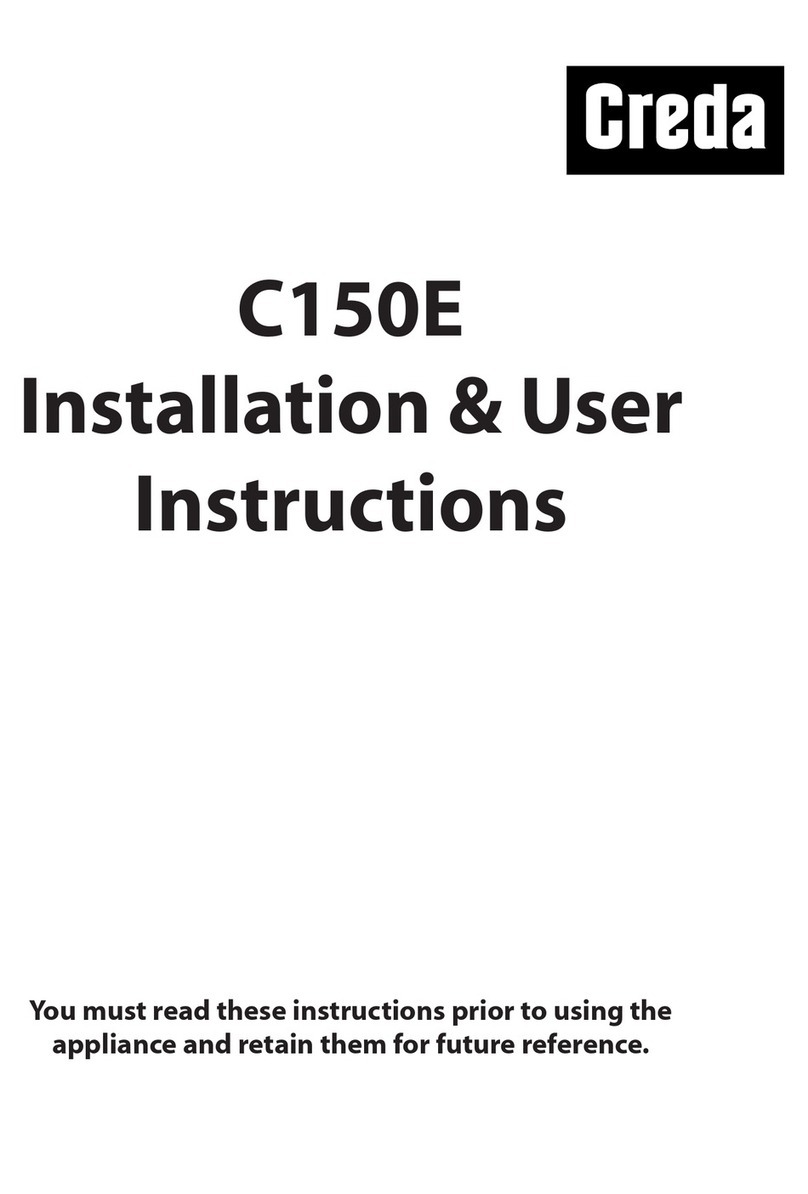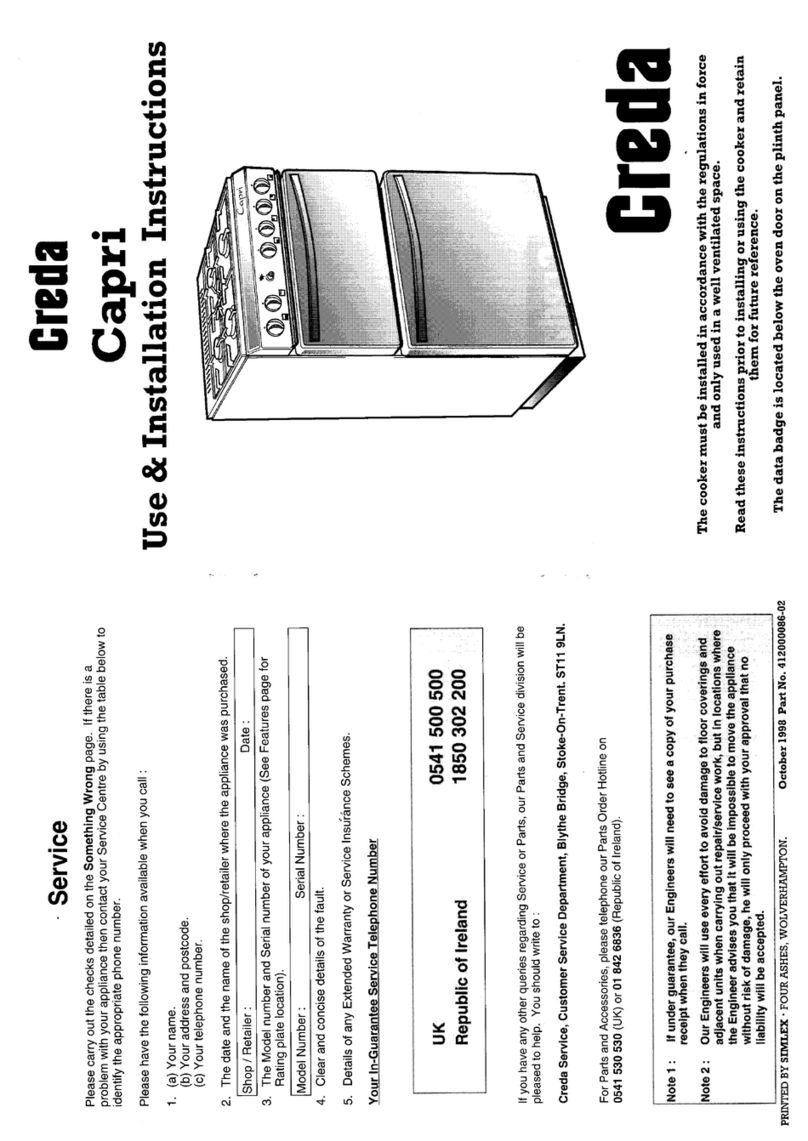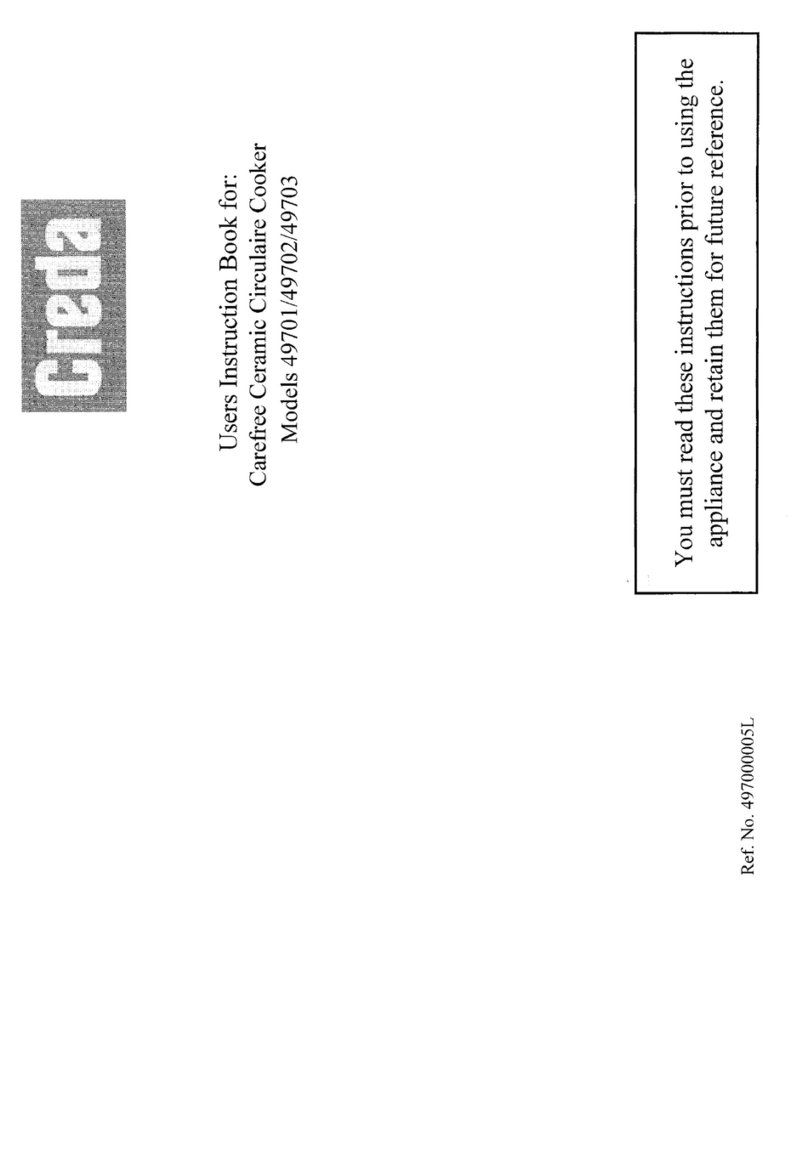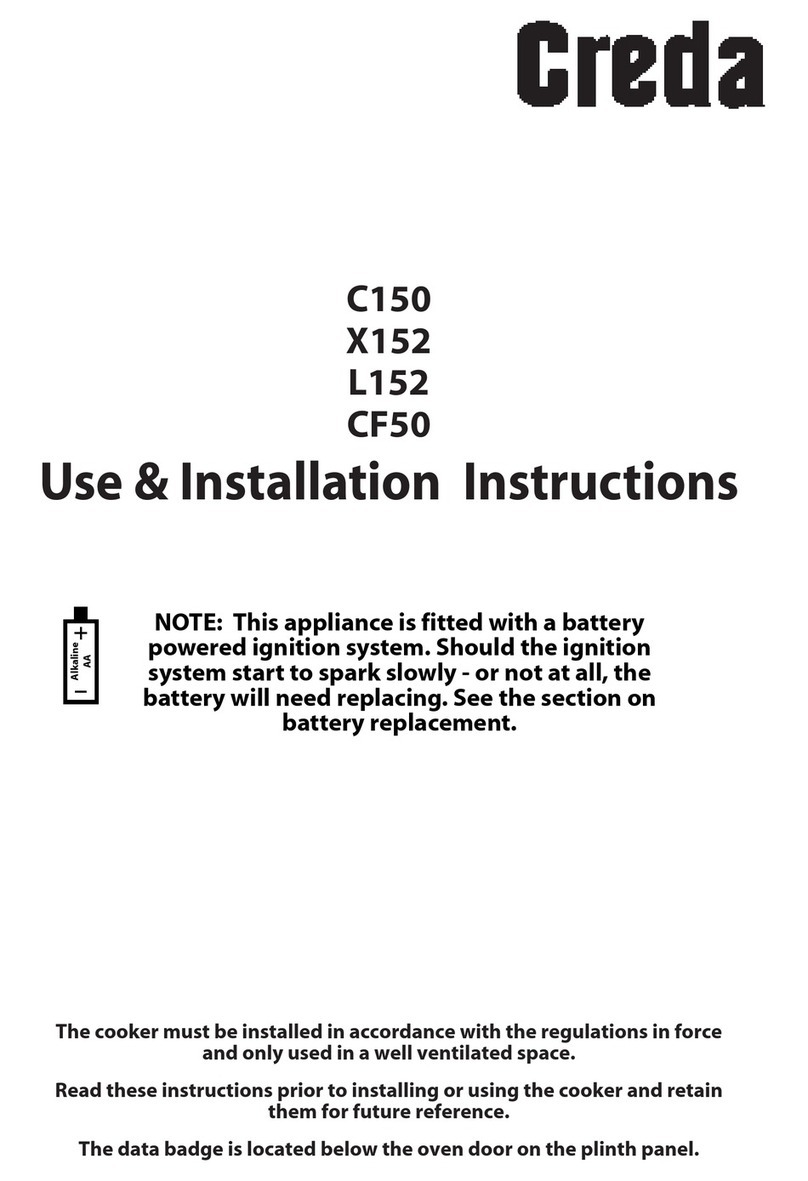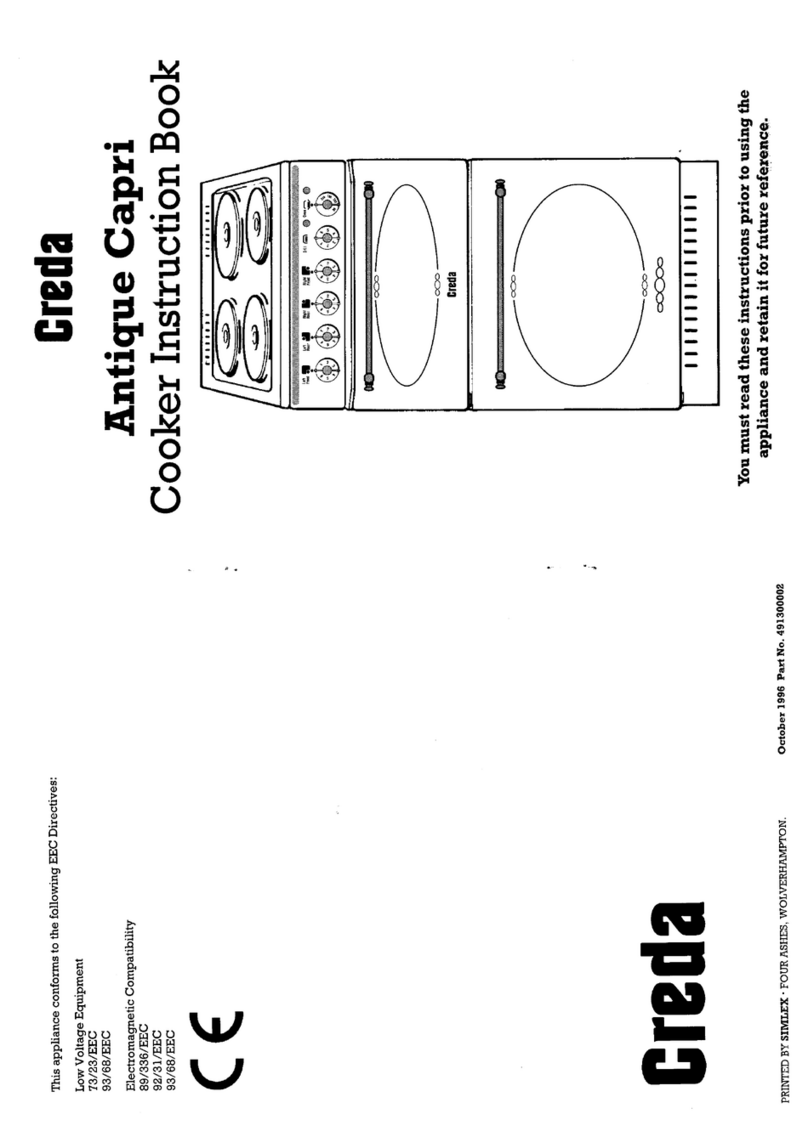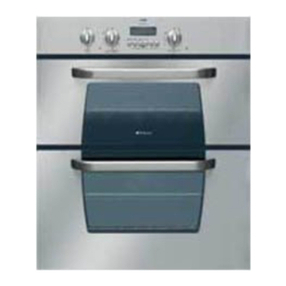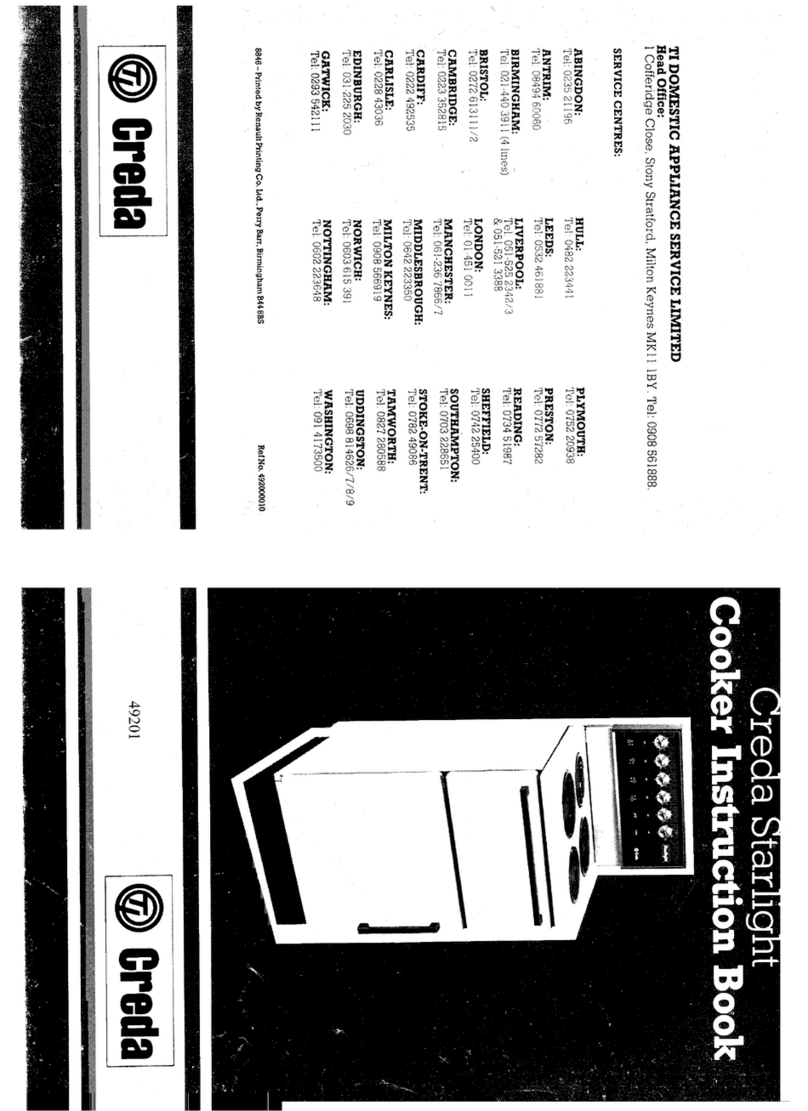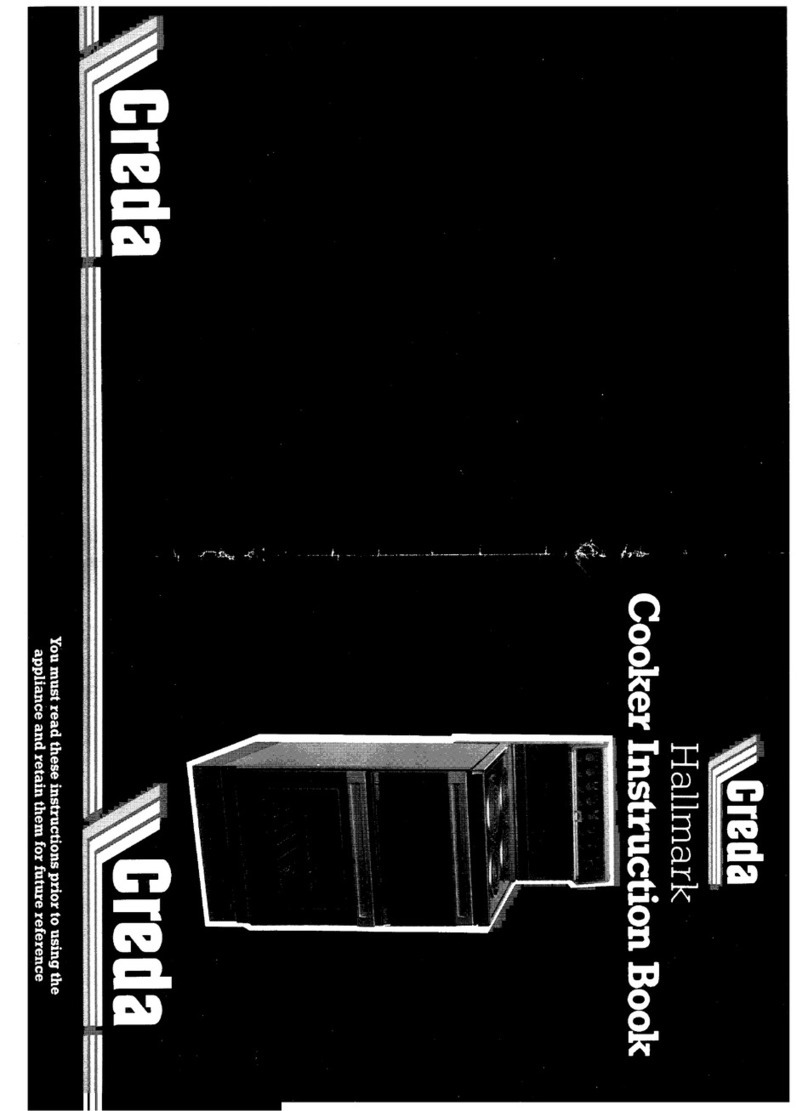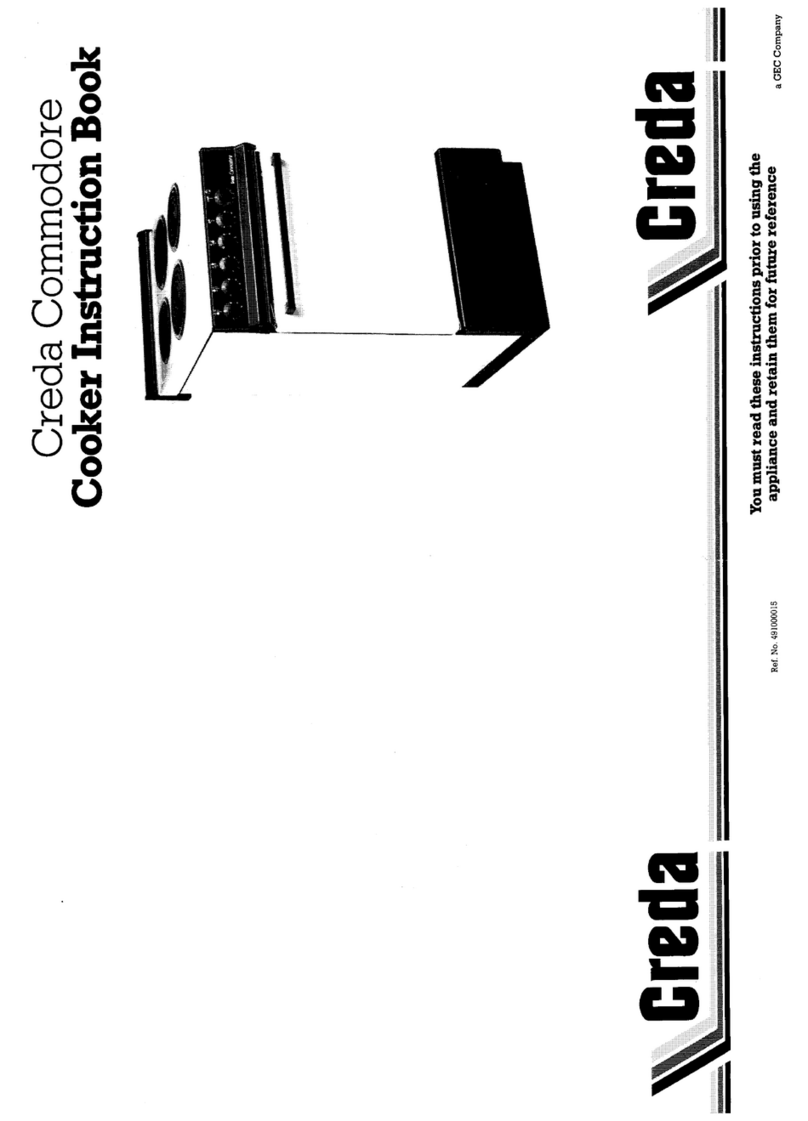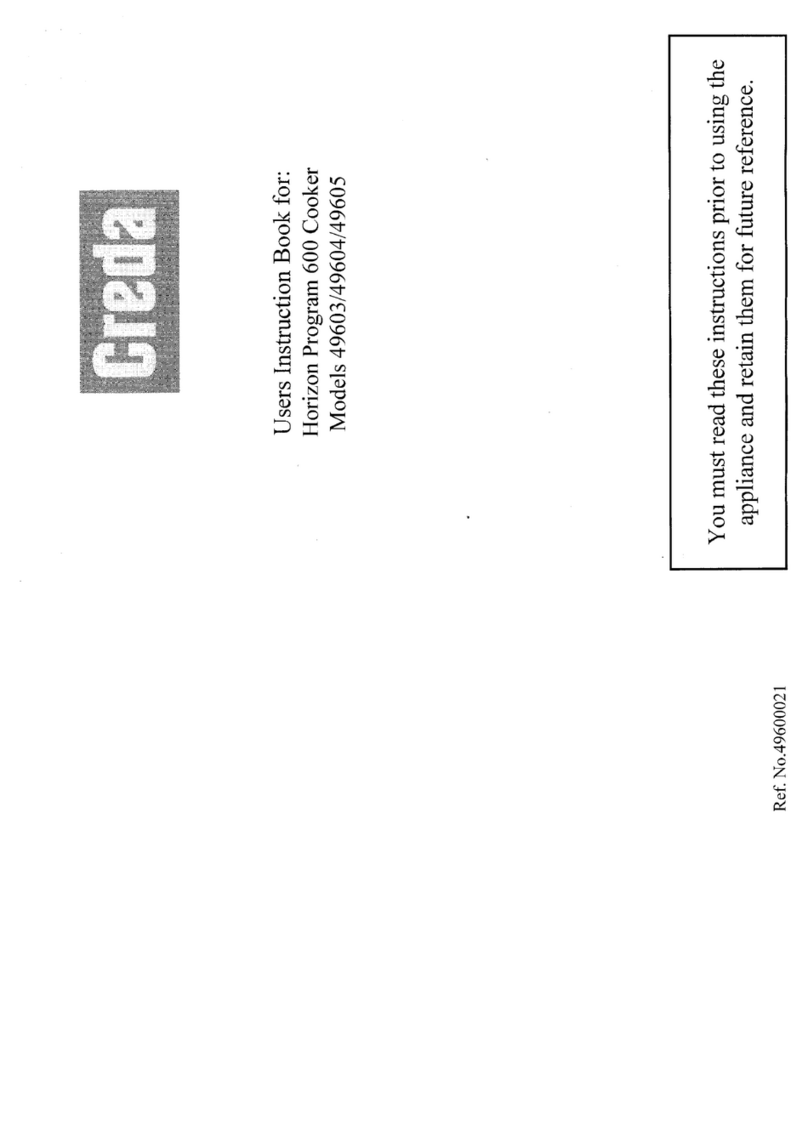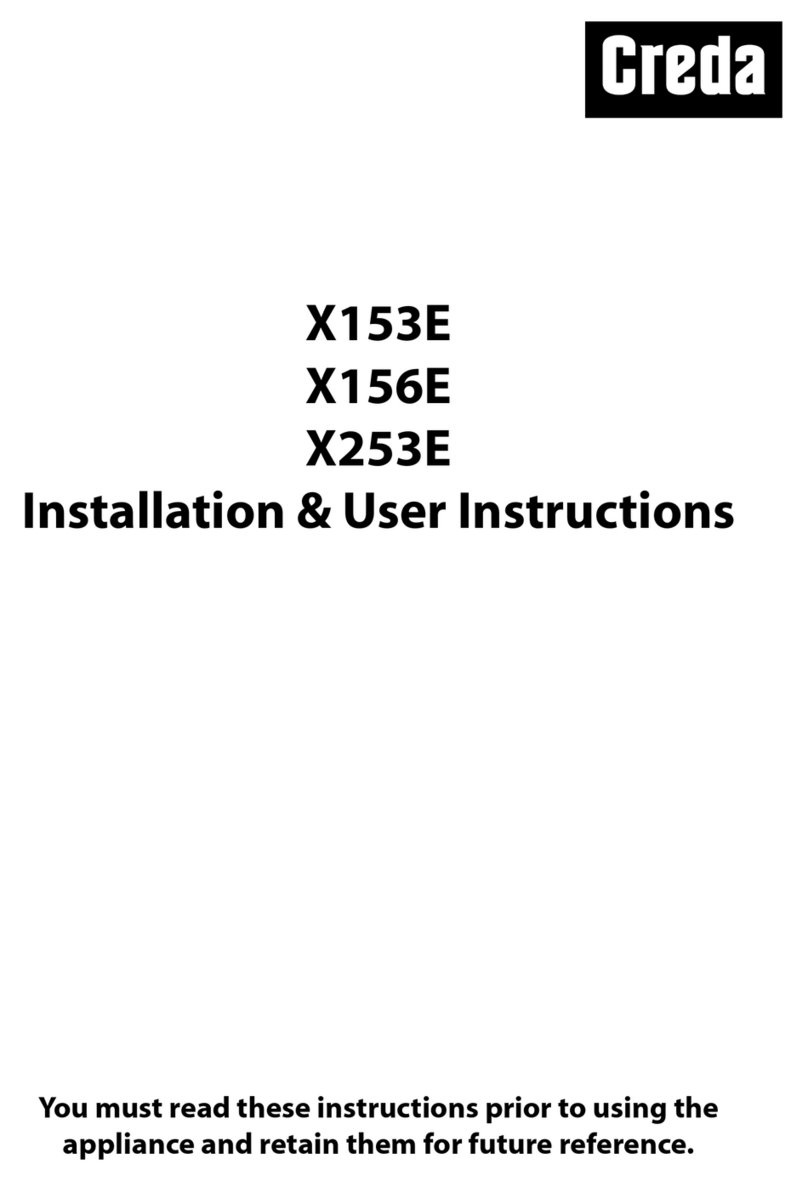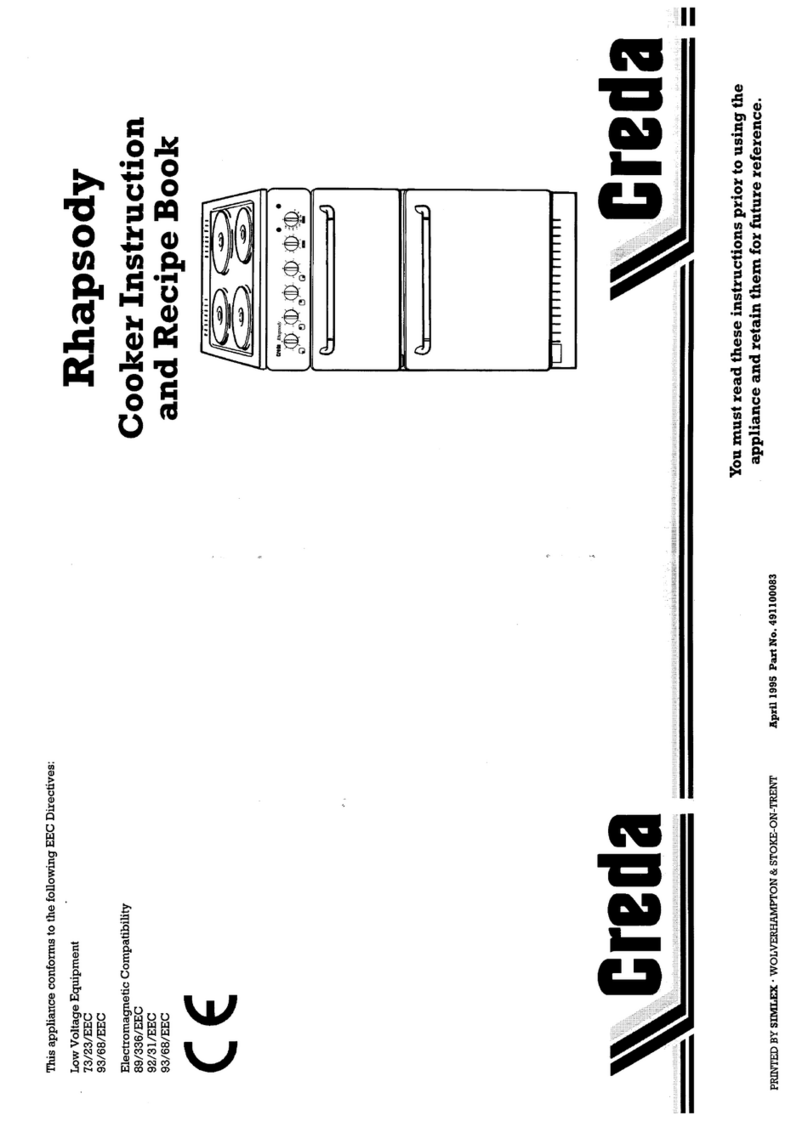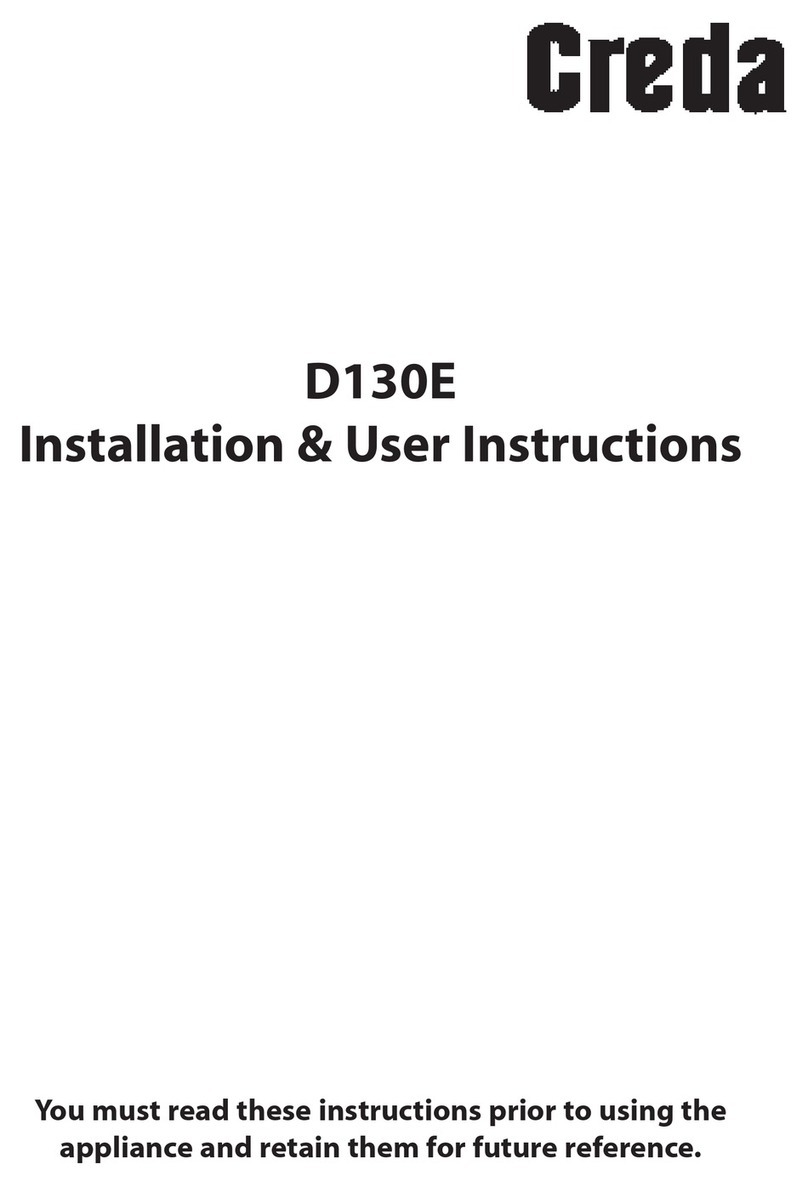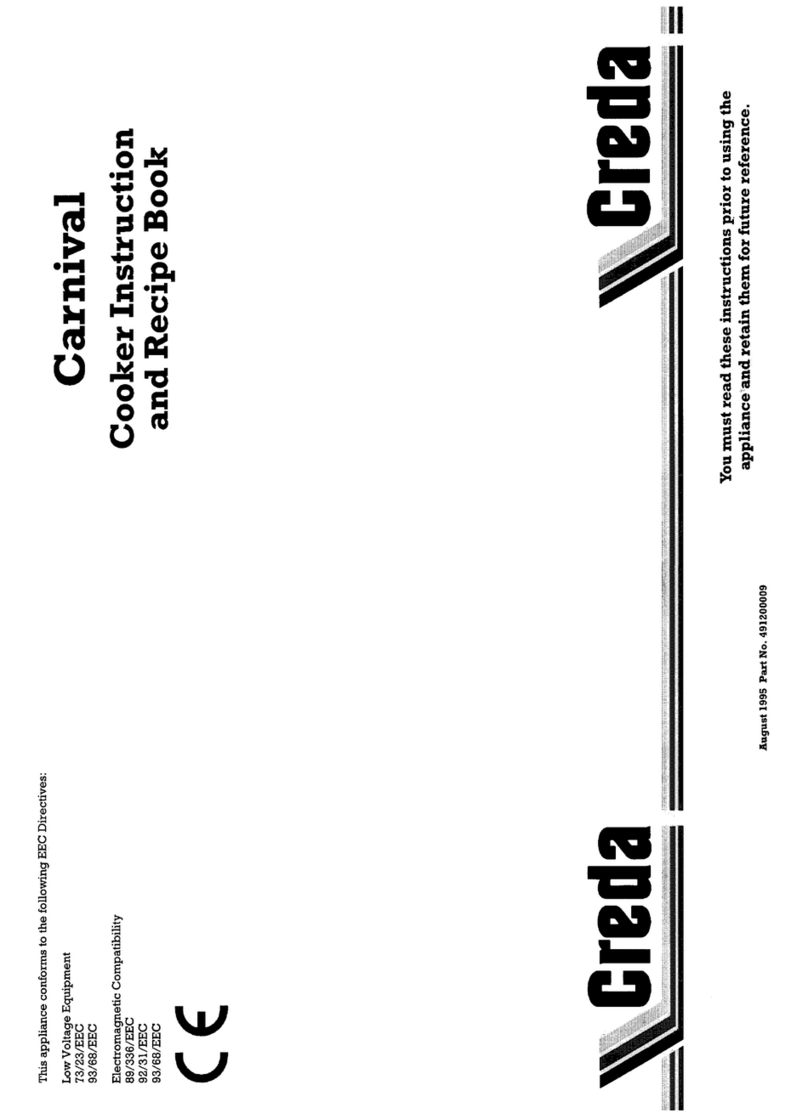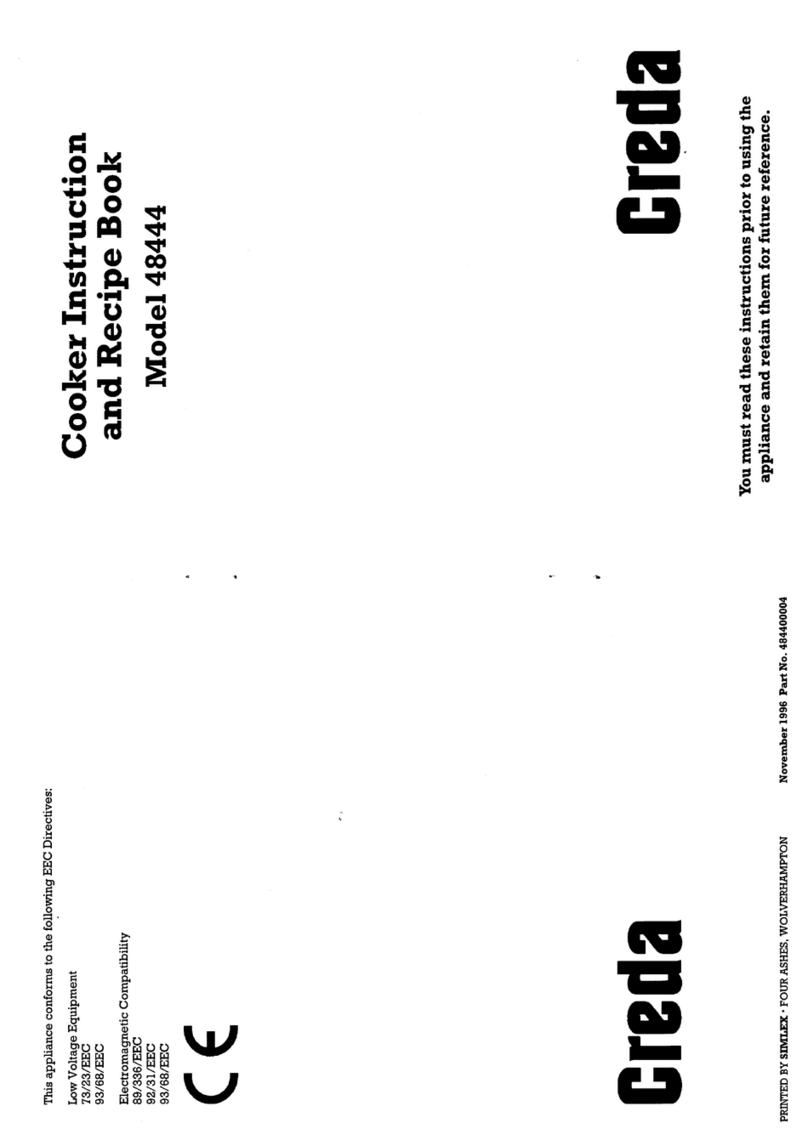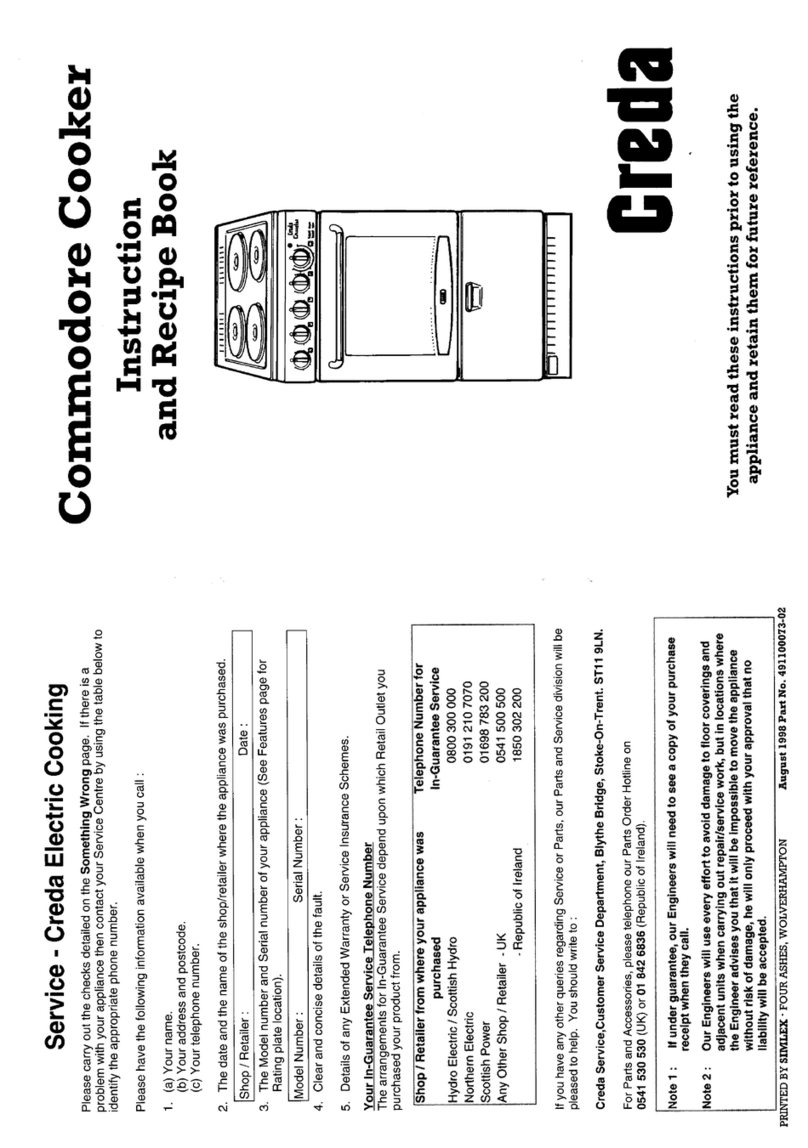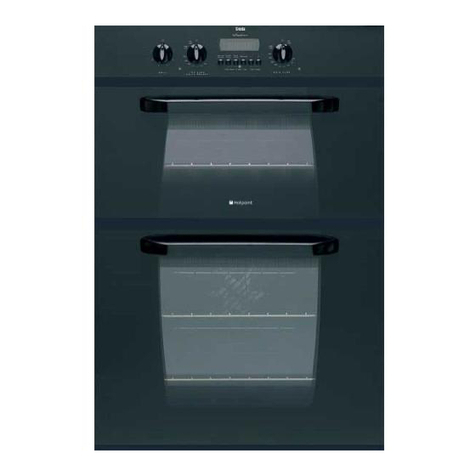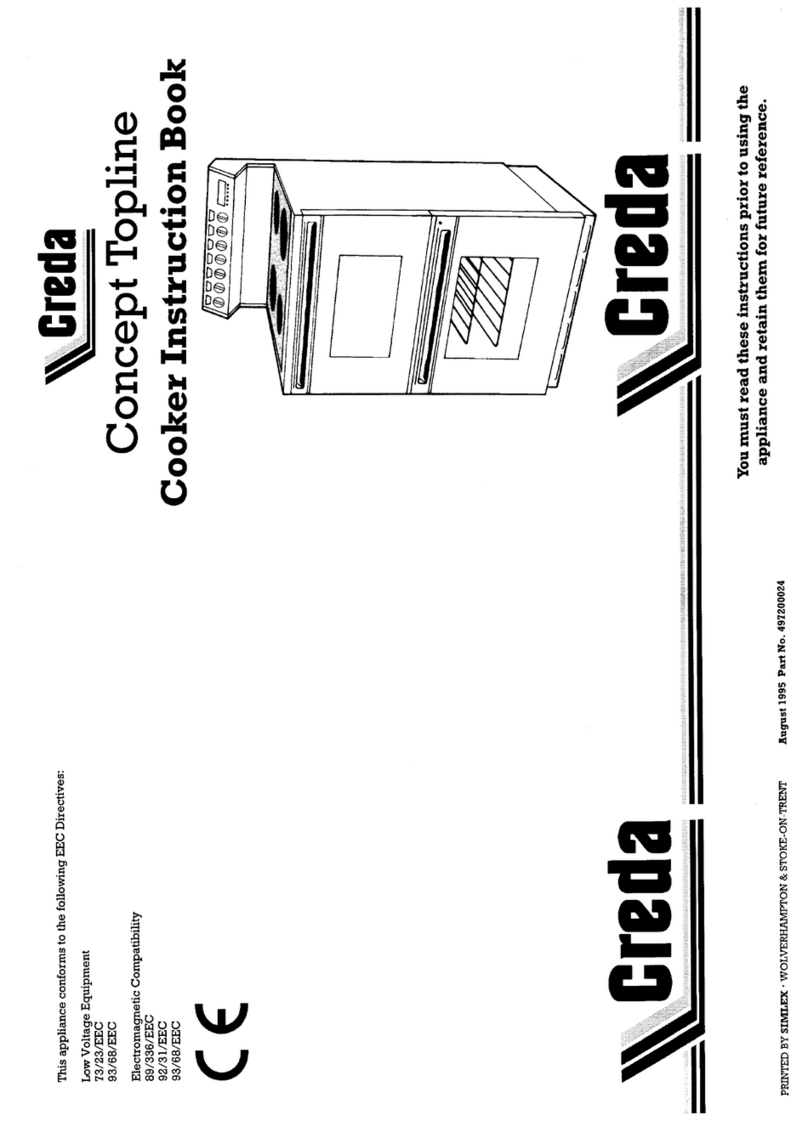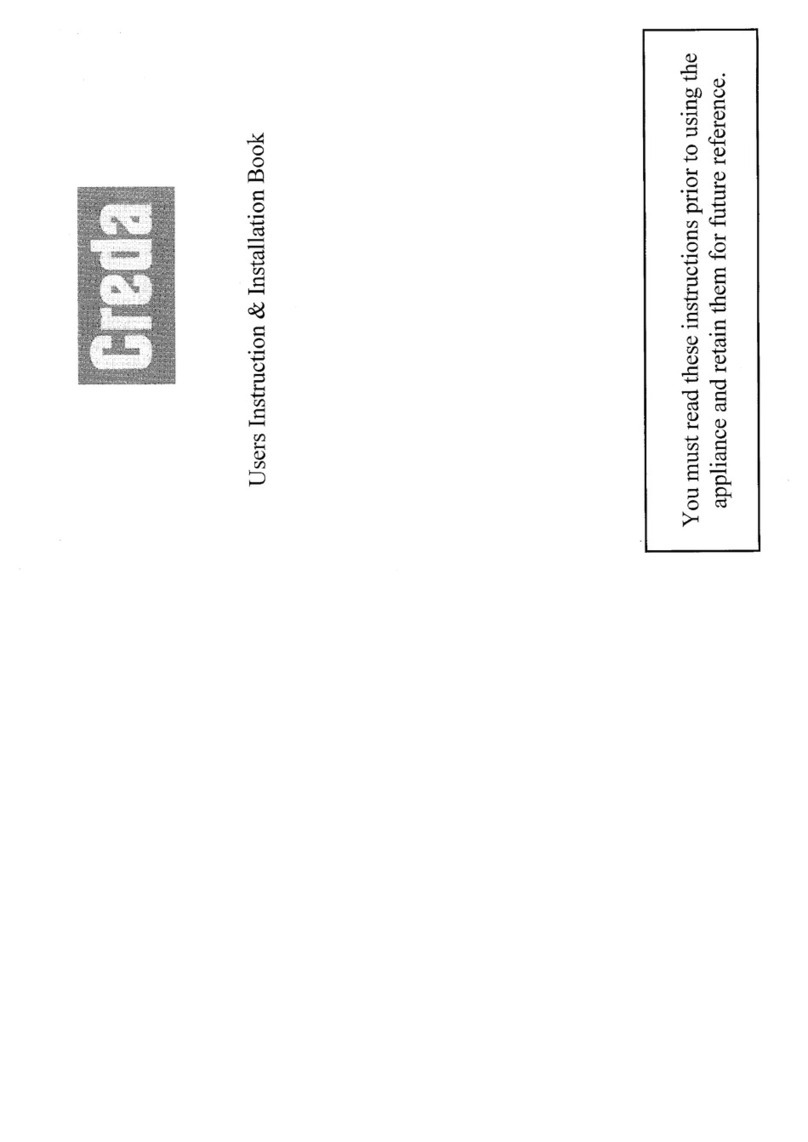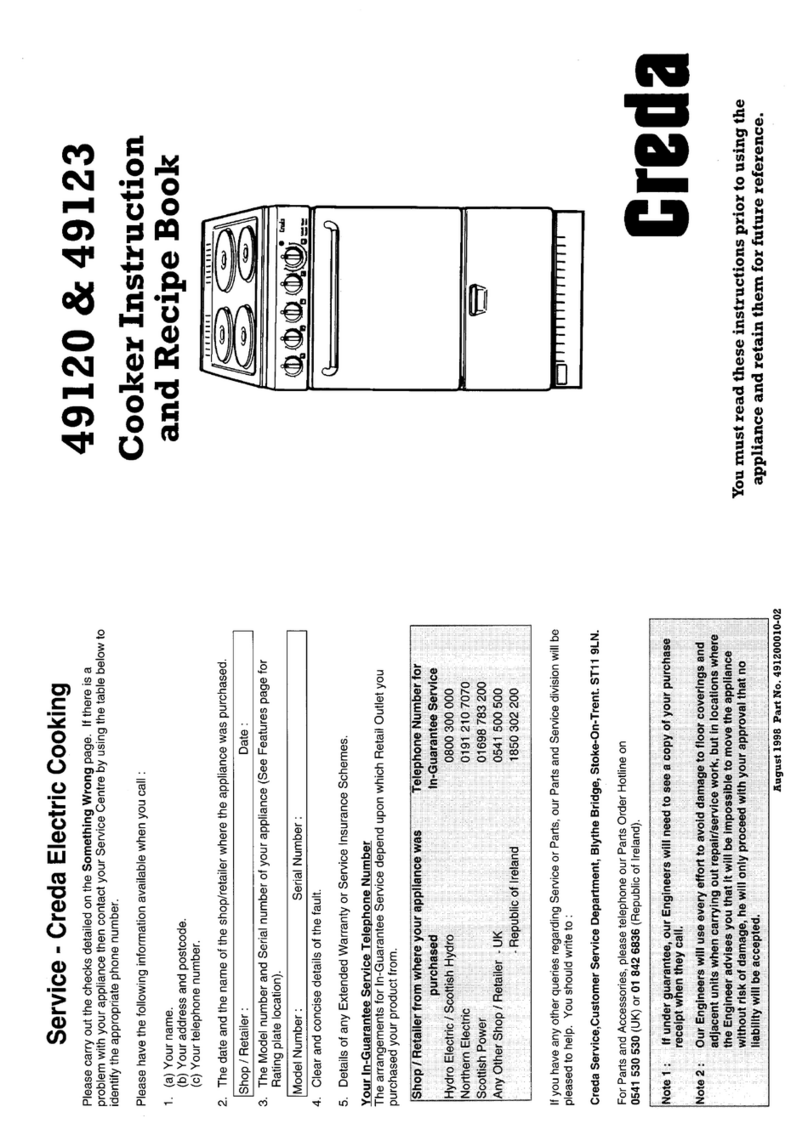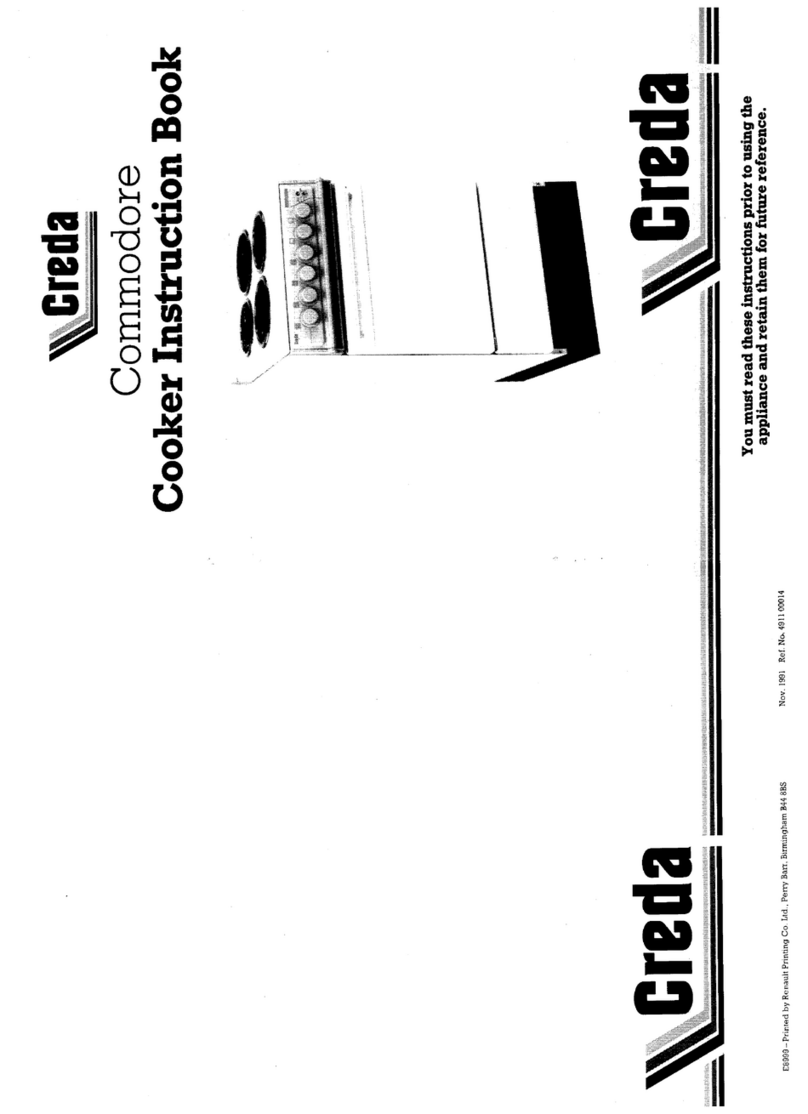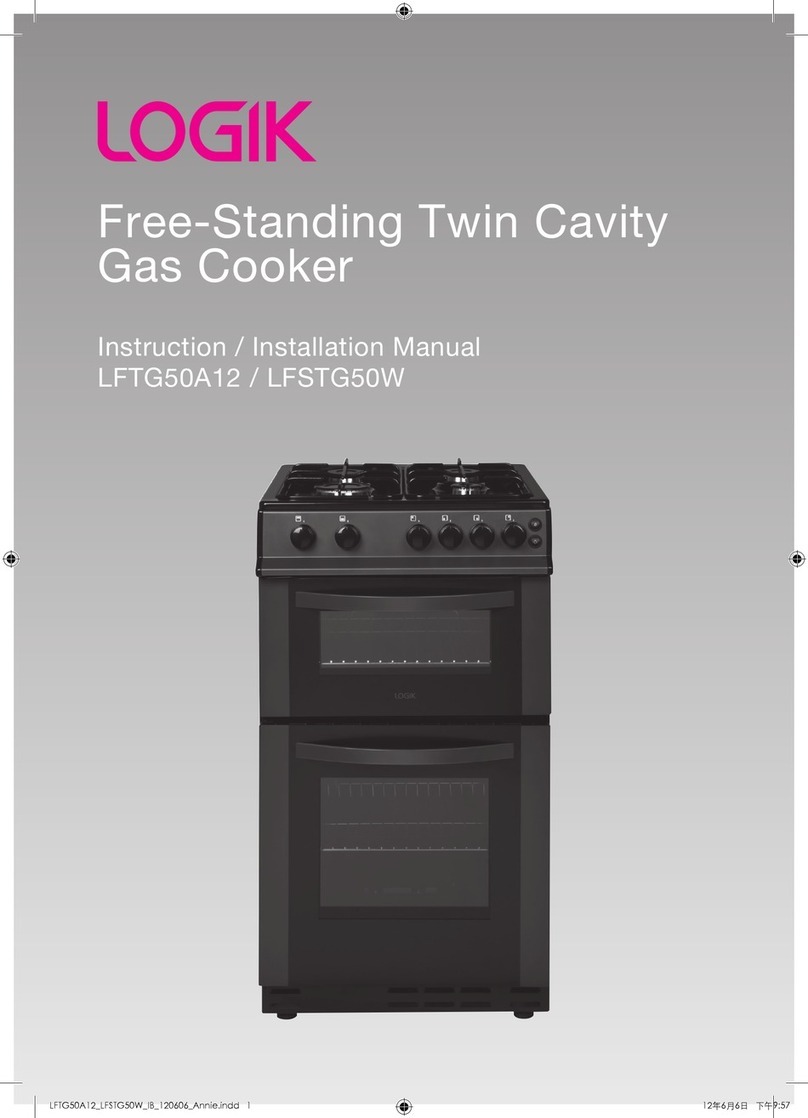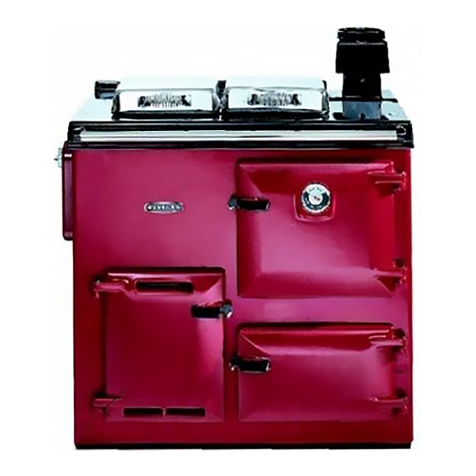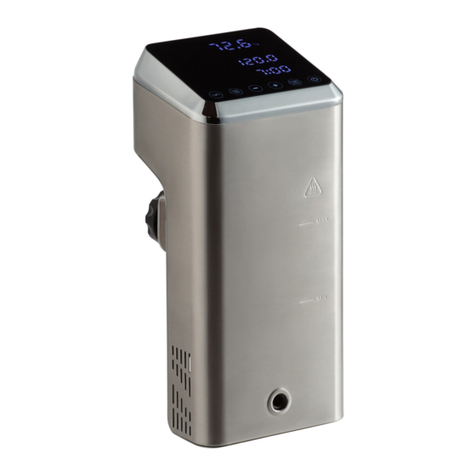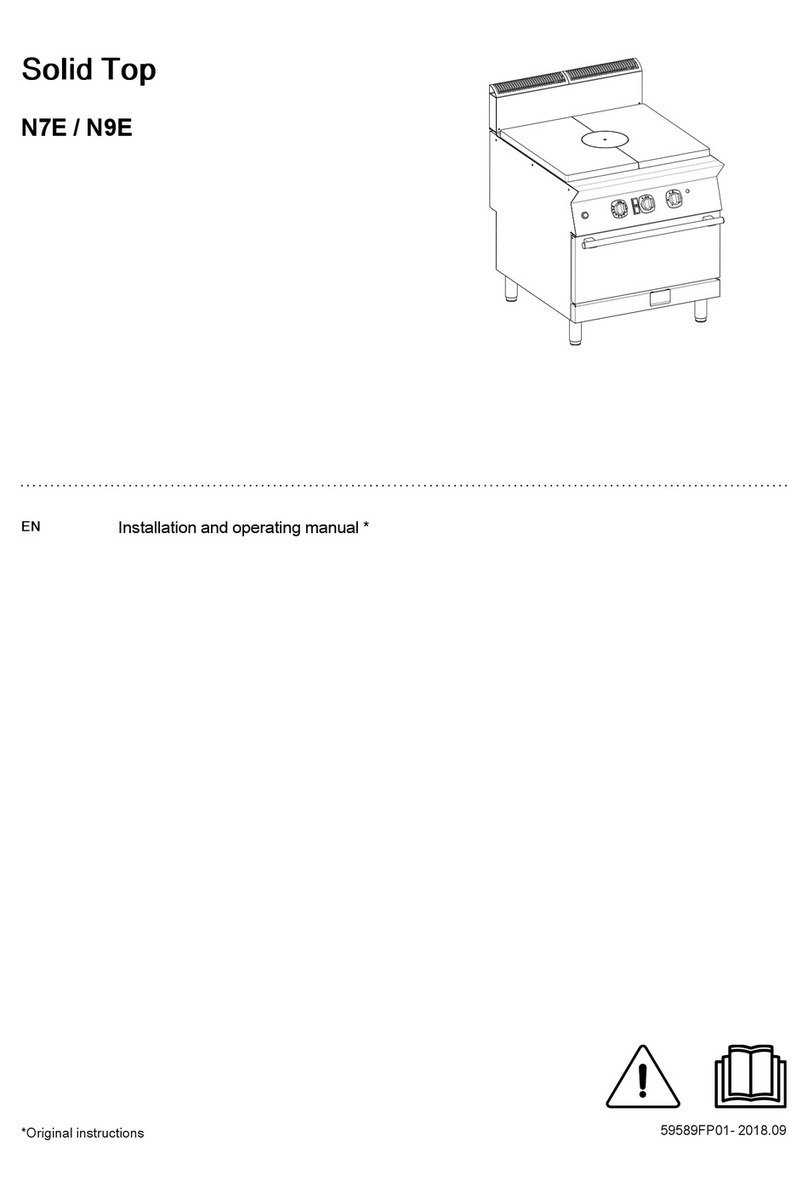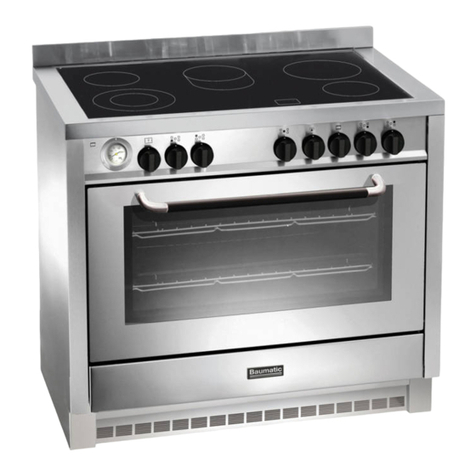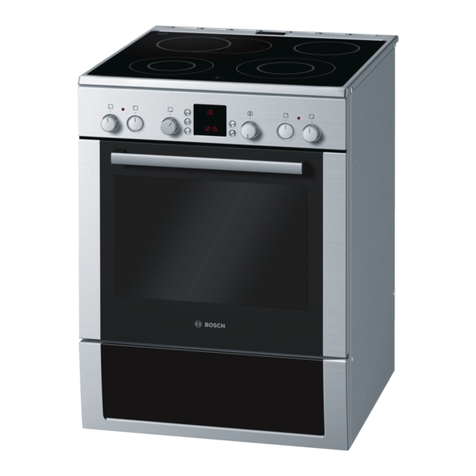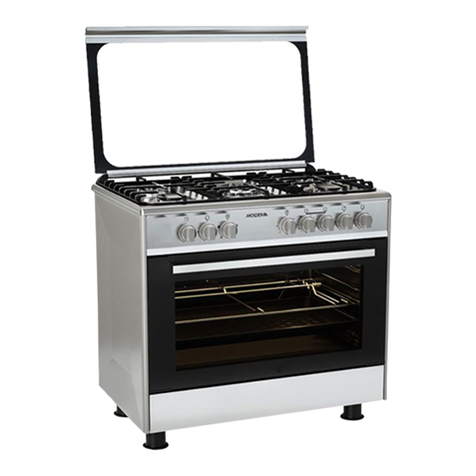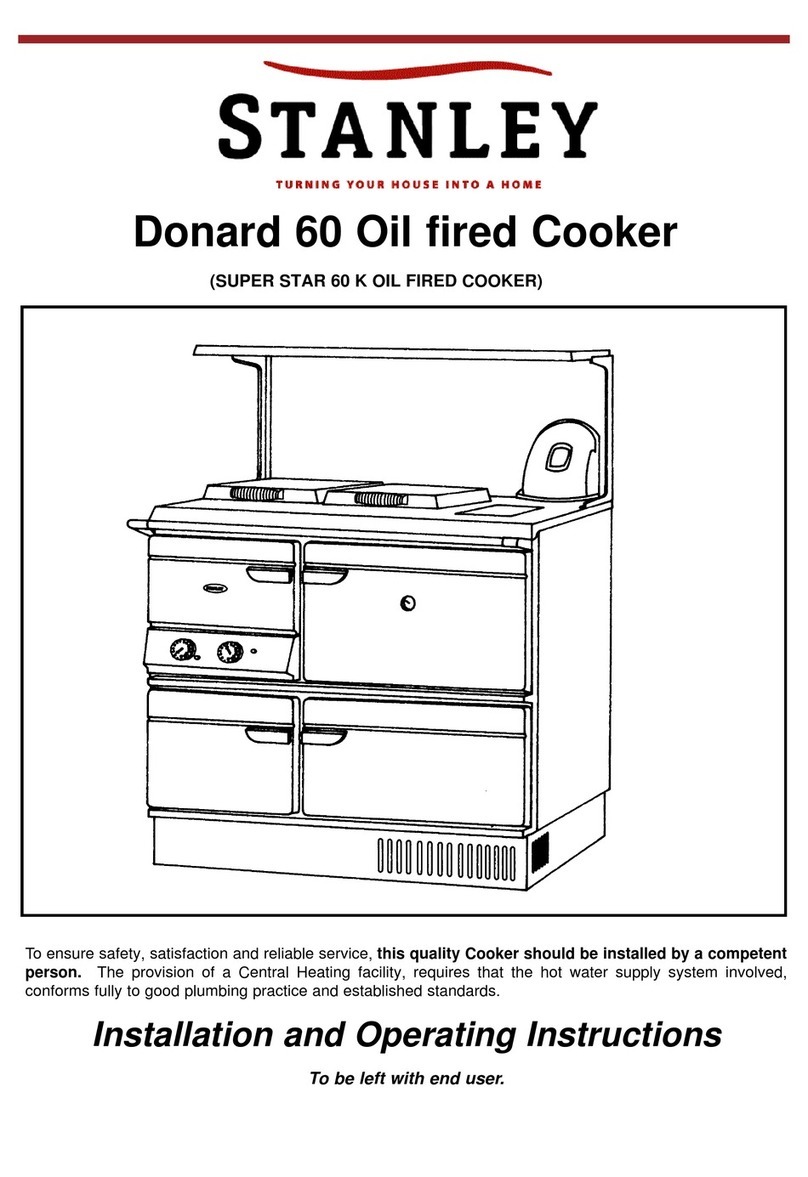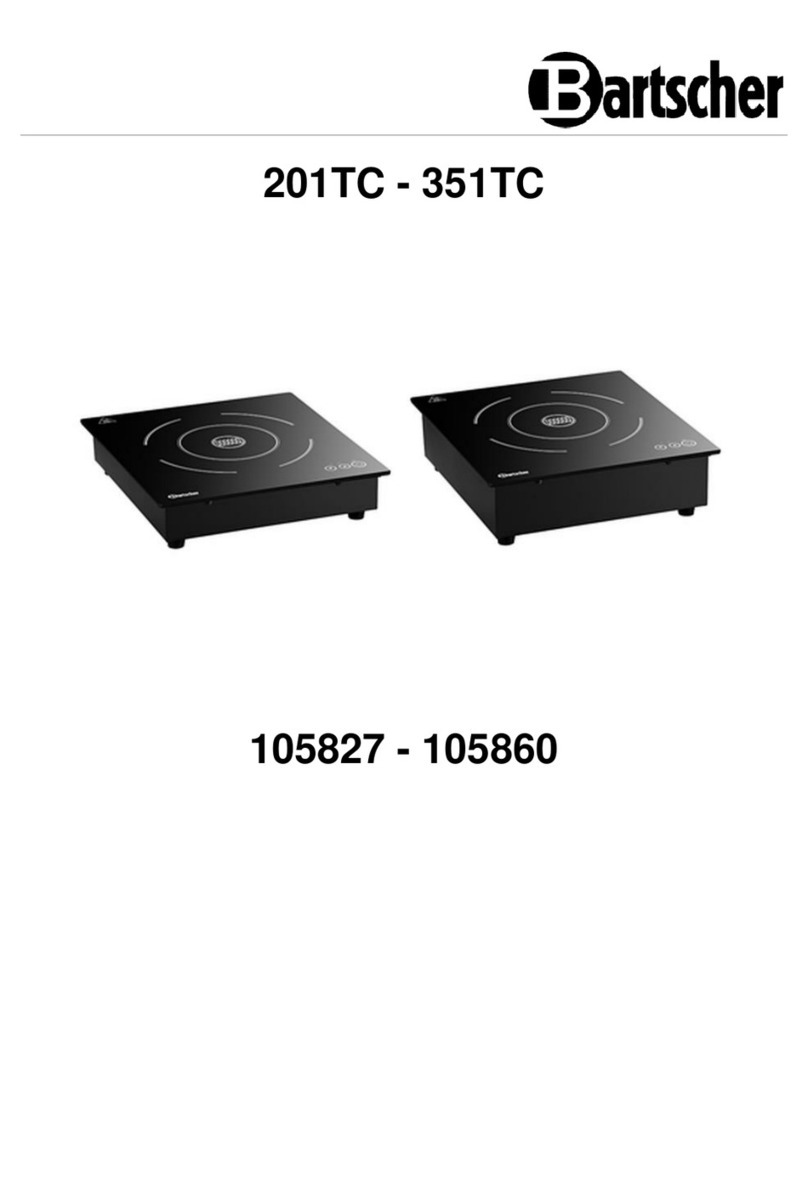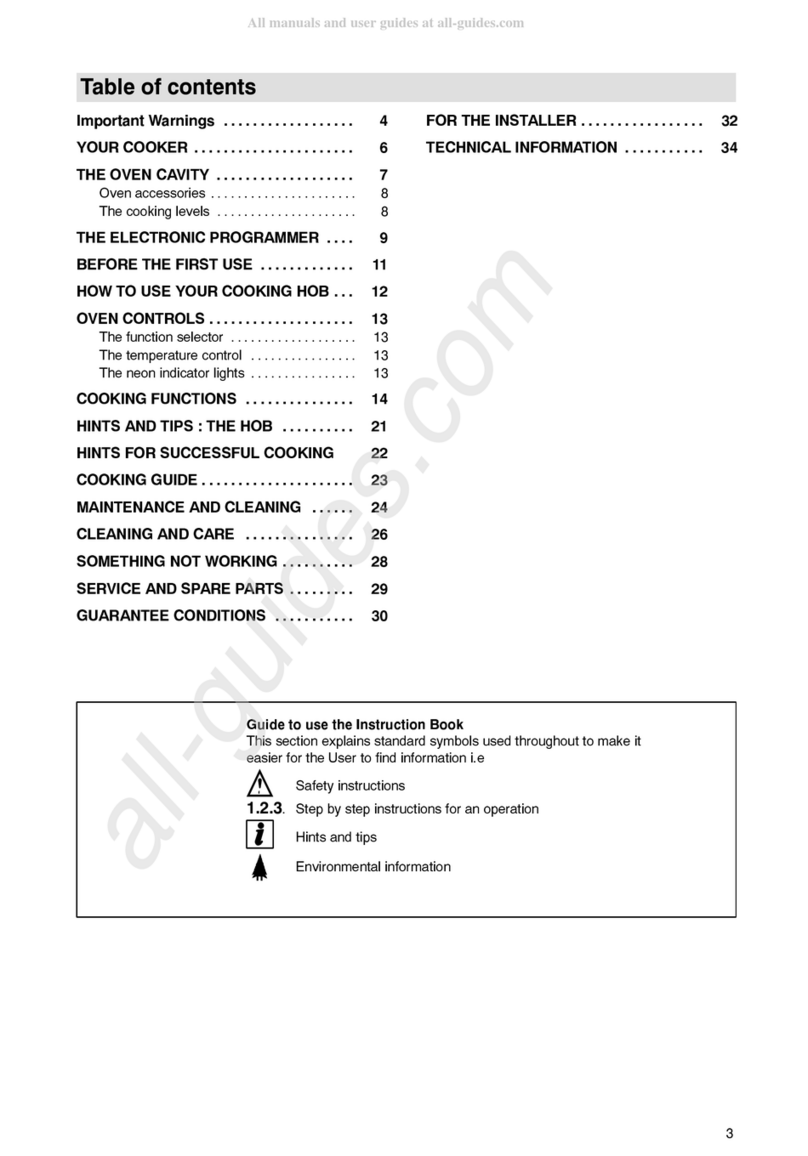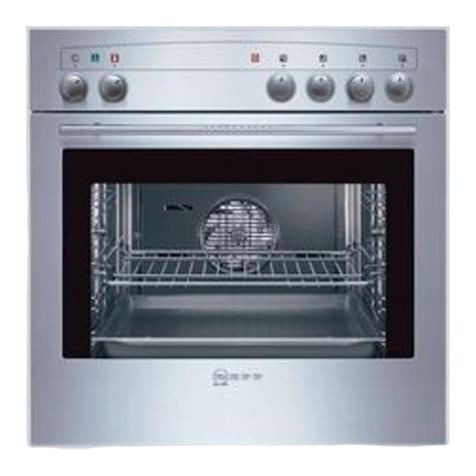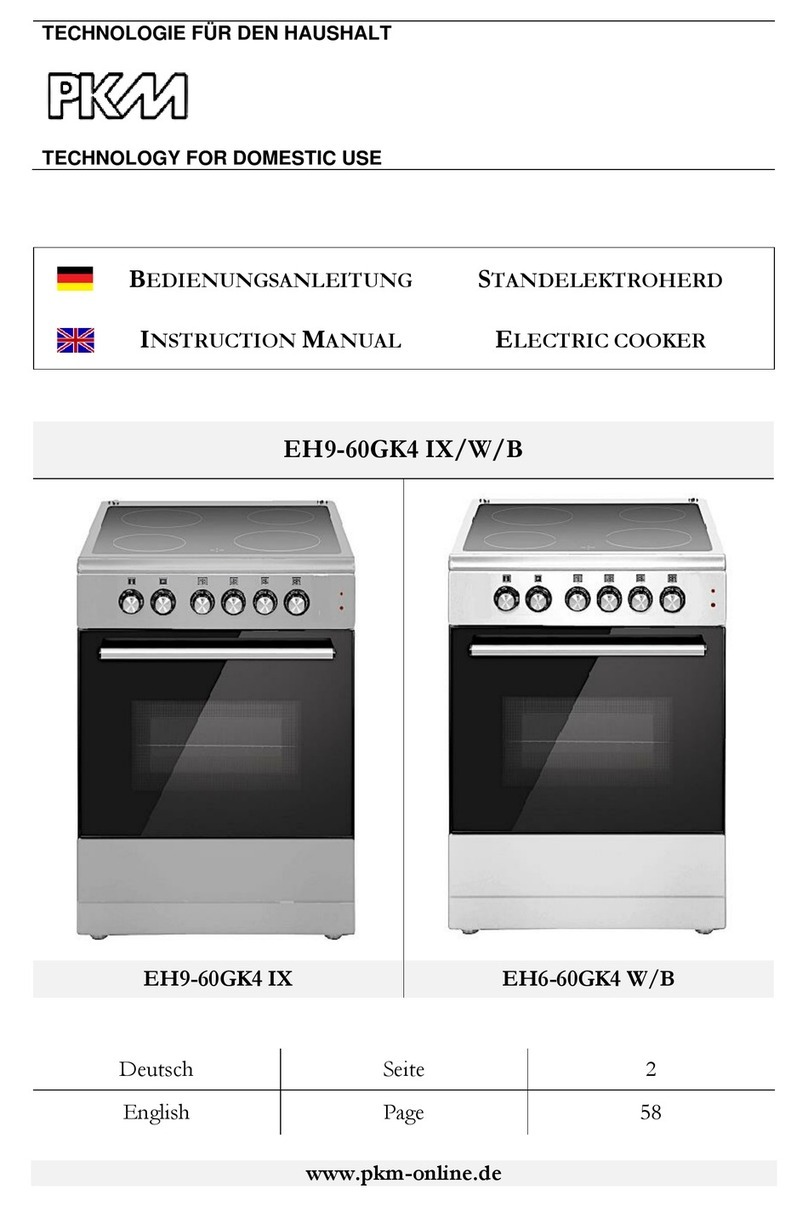Installation
WARNING – THIS APPLIANCE MUST BE EARTHED.
Your cooker should have been checked to ensure
that the
voltage corresponds with your supply volt
age,
this is stated
on the rating plate, which is situated
on the front of the
plinth. The cooker must be connected by a competent
person such as one who is NICEIC registered, to suitable
double-pole control unit with a minimum rating of 45A
and a minimum contact clearance of 3mm, which should
be fitted adjacent to the cooker, in accordance with latest
IEE regulations.
The power supply cable should conform to B.S.6004 with a
conductor size of 6mm2minimum.
The control unit should be easily accessible in the event of
an emergency, but must be within 2 metres
of and not directly above an appliance.
This appliance conforms to EN 55014 regarding
suppression of radio and television interference.
Access to the mains terminals is gained by removing the
rear access cover.
The mains cable must pass through the cable clamp
adjacent to the terminal block. Sufficient cable should be
used to allow the cooker to be pulled out for
servicing.
Ensure that the mains cable is routed away from any
brackets affixed to the rear panel and is not trapped to the
rear wall when pushing the cooker into position between
cabinets.
The height of the cooker can be adjusted by means of
adjustable feet in the plinth (900mm - 915mm). Adjust the
feet by tilting the cooker from the side. Then install the
product into position.
The cooker is designed to fit between kitchen
cabinets spaced 500mm apart. The space either side need
only be sufficient to allow withdrawal of the
cooker for servicing. It can be used with cabinets one side
or both as well as in a corner setting. It can also be used
free-standing.
This cooker is a type X appliance, as such adjacent side
walls which project above hob level, must not be nearer to
the cooker than 150mm and should be
protected by heat resistant material. Any overhanging
surface or cooker hood should not be nearer 650mm.
5
Siting the Cooker
